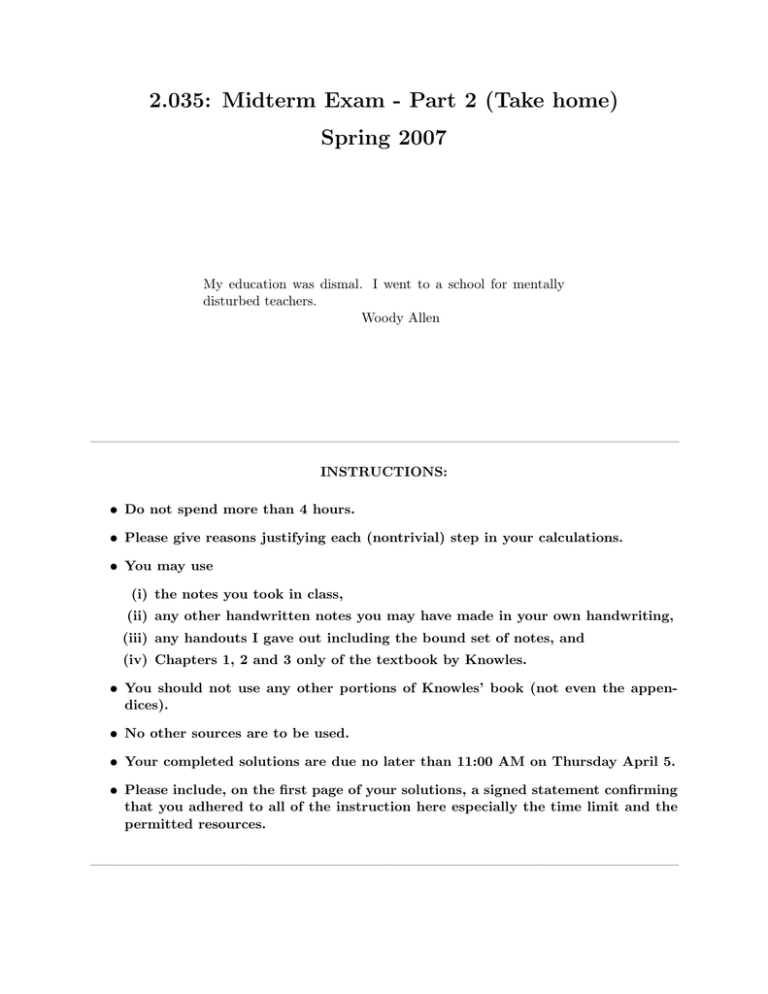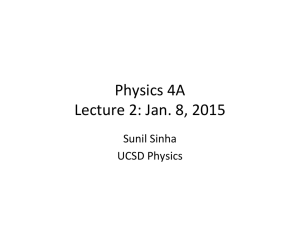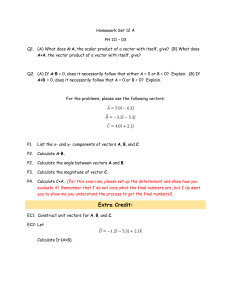Document 13666372
advertisement

2.035: Midterm Exam - Part 2 (Take home) Spring 2007 My education was dismal. I went to a school for mentally disturbed teachers. Woody Allen ——————————————————————————————————————————— INSTRUCTIONS: • Do not spend more than 4 hours. • Please give reasons justifying each (nontrivial) step in your calculations. • You may use (i) the notes you took in class, (ii) any other handwritten notes you may have made in your own handwriting, (iii) any handouts I gave out including the bound set of notes, and (iv) Chapters 1, 2 and 3 only of the textbook by Knowles. • You should not use any other portions of Knowles’ book (not even the appen­ dices). • No other sources are to be used. • Your completed solutions are due no later than 11:00 AM on Thursday April 5. • Please include, on the first page of your solutions, a signed statement confirming that you adhered to all of the instruction here especially the time limit and the permitted resources. ——————————————————————————————————————————— ——————————————————————————————————————————— Problem 1: Consider the set V of all 2 × 2 skew symmetric matrices ⎛ 0 x12 x=⎝ ⎞ ⎠, x12 = −x21 , 0 x21 with addition and multiplication by a scalar defined in the “natural way”. a) Show that V is a vector space. b) Give an example of a set of 2 linearly dependent vectors in V, and an example of 2 linearly independent vectors in V. c) What is the dimension of V? d) If x and y are two vectors in V, show that x · y = x12 y12 + x21 y21 is a proper definition of a scalar product on V. From hereon assume that the vector space V has been made Euclidean with this scalar product. e) Find an orthonormal basis for V. f) Let A be the transformation defined by ⎛ 0 2x12 2x21 0 Ax = ⎝ ⎞ ⎠ for all vectors x ∈ V. Show that A is a tensor. g) Show that the tensor A is symmetric. h) Is A singular or nonsingular? i) Calculate the eigenvalues of A. ——————————————————————————————————————————— Problem 2: Consider the 3-dimensional Euclidean vector space V which is comprised of all polyno­ mials of degree ≤ 2; a typical vector in V has the form x = x(t) = co + c1 t + c2 t2 . Addition and multiplication by a scalar are defined in the “natural way”. The scalar product between two vectors x and y is defined as x·y = � 1 x(t)y(t)dt. −1 Determine an orthonormal basis for V. (Hint: First find any basis for V and then use the GramSchmidt process described in Problem 1.17 of Knowles.) ——————————————————————————————————————————— Problem 3: Let A be a symmetric positive definite tensor on a n-dimensional vector space V. Let α1 , α2 , . . . , αn be the eigenvalues of A where the eigenvalues are ordered according to 0 < α1 ≤ α2 . . . ≤ αn . Show that the smallest eigenvalue � α1 = min x · Ax � where the minimization is taken over all unit vectors x ∈ V. (Hint: Work using the components of A and x in a principal basis of A.) Show similarly that the largest eigenvalue � αn = max x · Ax � where the maximization is taken over all unit vectors x ∈ V. ——————————————————————————————————————————— Problem 4: If A is an arbitrary nonsingular tensor, show that � A−1 �T � = AT �−1 . ——————————————————————————————————————————— Problem 5: Give an example of a tensor A (that is NOT the identity tensor I) which has the property A = A 2 = A3 = A4 = . . . Hint: Think geometrically. ——————————————————————————————————————————— Problem 6: Let c and d be two distinct non-zero vectors belonging to a 3-dimensional Euclidean vector space. Show (geometrically by drawing arrows or some other way) that one can always find a unit vector x such that (c · x)(d · x) > 0; and that one can always find some other unit vector x such that (c · x)(d · x) < 0. Let C be the symmetric tensor defined by C = I + c ⊗ d + d ⊗ c. Show (using the result of Problem 3 or otherwise) that the eigenvalues λ1 , λ2 , λ3 of C have the property that λ1 < 0, λ2 = 0, λ3 > 0. (Remark: This result is the key to showing the Ball and James Theorem mentioned in class when we were discussing material microstructures.) ———————————————————————————————————————————


